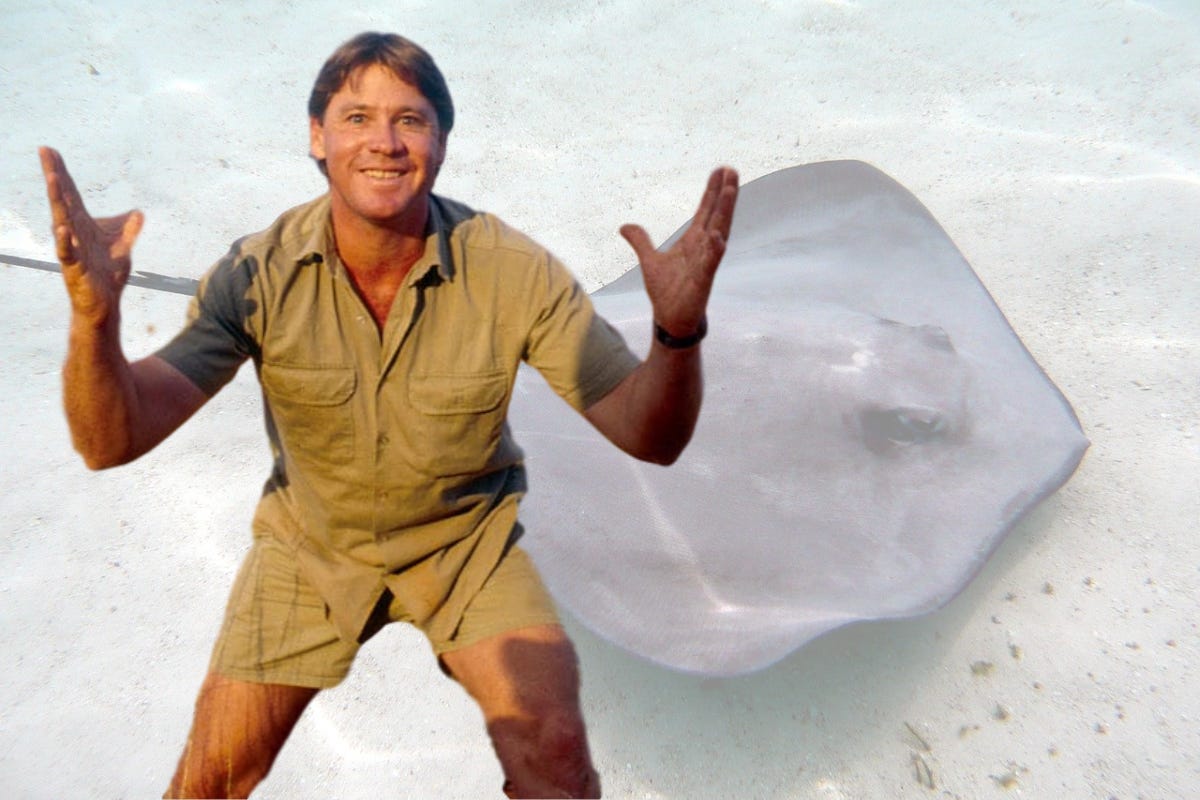Did Reality TV Kill Steve Irwin?
Reality TV often crosses the boundary of common sense
Written back in 2006 when Steve Irwin died, the incredible flurry of nature reality shows disguises some of the hidden dangers of trying to produce entertainment over practicing safe protocols.
I hated The Crocodile Hunter, but I miss Steve Irwin. The famed Aussie icon sprang on the wild screen like a Tasmanian devil, the cartoon version, in a whirlwind of jungle pandemonium.
I grew up watching Wild Kingdom, its aged host Marlin Perkins usually playing it safe sitting in a safari jeep; whereas, the go-for-the-gusto Irwin was a mad dash of inexhaustible passion and adolescent adventure. The Crocodile Hunter could never sit still.
Watching the TV show was agonizing, a love-hate relationship. In one episode Irwin and Terri, his inexperienced but loyal partner, played bumper cars with wild camels in the Australian outback. I cringed every time their vehicle swerved into the hindquarters of a galloping beast so Irwin could try to lasso one. It was a pathetic display of wild enthusiasm overriding good sense.
And no sane parent could forgive Irwin for dangling his newborn son, Bob, as bait in the crocodile lair. There was no educational moment in that scary picture.
The camera has no limits; it just keeps filming. And Irwin was born to be a front man. He wasn't a research scientist; he grew up playing to audiences at the Australia Zoo, a family run business. He was a showman first and foremost; caution seemed to come a too distant second. However, there is no doubt that Irwin brought the conservation message to a new generation. His zany style of stalking wildlife and quirky chats with animals enamored The Crocodile Hunter to millions of people around the globe.
But did Irwin repeatedly step across the line of reasonable behavior or dismiss his instincts to please viewers? Isn't nature a reality show enough on its own merit without the need for a simulated or pushed sense of danger?
When Irwin died in September of 2006 I was camping out with Dr. Lee Grismer, a herpetology researcher from La Sierra University in California, and his crew in the rainforests of Malaysia. At first we thought it was a joke: C'mon a stingray! Later we got hold of a newspaper.
Most of us had the same thought; Irwin always took too many chances and now it finally happened. For field biologists trained to expect, prepare for and minimize dangerous situations, Irwin was an extreme risk taker, so it was probability that caught up with him.
Lee Grismer knows the lure of the lens. Along with his son Jesse, he's made a few reality shows for National Geographic's Snake Wranglers and Animal Planet's Reptile Kings. He struggles with balancing the thrill of his scientific explorations as the corporate sirens call for more than the normal appearances.
The minuscule amount that I've been exposed to TV shows, that stuff can be a real ego boost. Irwin catered to the public to begin with, we don't.
In the jungle, Grismer is all business; no unnecessary risks are tolerated. Once when handling poisonous snakes for someone else's TV program, the director asked him to retake a scene to get a low angle shot. Grismer, an imposing, gorilla-sized man, told him:
No, I picked it up once and it's in the bag. I hope you got it the first time.
In an old FedEx commercial, Irwin once pretended to get bitten by "the most venomous snake in the world." And instead of the antivenom being shipped on time by FedEx, a less speedy courier failed to deliver the lifesaving drug. Before collapsing he tells viewers with an ironic prescience, "In my line of work, if you are not absolutely sure, you are absolutely dead." He was absolutely right.
In 2001, Dr. Joe Slowinski died from the bite of a krait snake in the mountains of Myanmar. As Curator of Herpetology at the California Academy of Sciences in San Francisco, the 38 year-old Slowinski was an expert on venomous snakes.
In previous encounters, a spitting cobra once spewed venom into his eyes that were treated with tamarind juice to abate the pain and blurred vision. On another incident, a cobra bit him, however, this attack turned out to be a dry bite - when no venom is injected into the fangs.
In these episodes, Slowinski was taping specials for National Geographic. But in the remote jungles of Myanmar, he made a simple fatal error. He reached into a snake bag before knowing exactly what was in it. A rookie mistake that he knew was against protocol.
After Irwin’s death I stopped watching The Crocodile Hunter. It was impossible to enjoy his on-camera presence without thinking of his heartbreaking demise.
Years later I happened upon an episode of the Croc Files filmed in the remote coastal wilderness of Australia. A helicopter dropped off Irwin in a muddy estuary where a single, monstrous salty crocodile lay regal.
Irwin was alone and exposed. A reverence overcame him after trying twice to belly wiggle his way closer to the enormous reptile before stopping cold. Laying face down in the muck he didn’t budge or breathe. He remained focused and never took his eyes off the danger. He was immersed in his element living on the edge as a man knowing that nature could literally eat him up.
It was the first time I ever saw Steve Irwin - not The Crocodile Hunter - understand his limits.
My appreciation to you for taking the time to read these selections and essays. I hope you find some enjoyment and insights about the world we live in. Thanks for supporting and sharing Continental Drift.
— Rick Scobi (@rickscobi)




